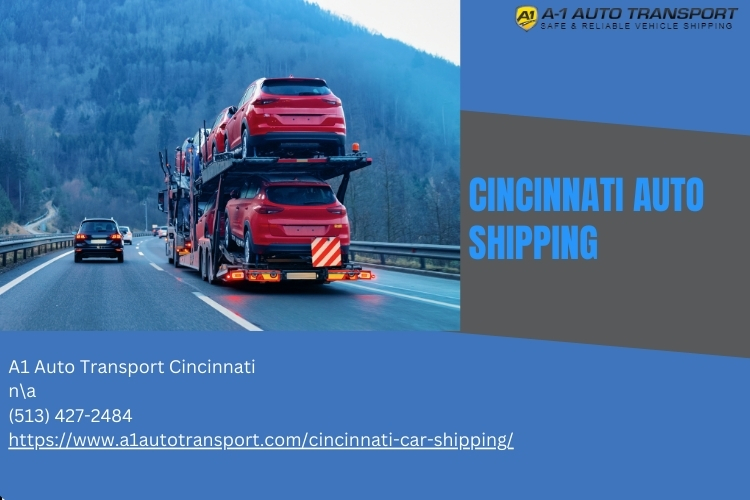Introduction
When it comes to moving your vehicle across the country or even just a few states over, the process can be riddled with misconceptions. Many people harbor doubts about Cincinnati vehicle shipping, believing it to be fraught with complications and pitfalls. However, understanding the realities behind Cincinnati vehicle transport can save you time, money, and unnecessary stress. In this comprehensive guide, we’ll debunk common myths surrounding Cincinnati car transport and arm you with essential knowledge for a seamless shipping experience.
Cincinnati Vehicle Shipping Myths Debunked: What You Should Really Know
The Importance of Accurate Information
Before diving into the myths surrounding Cincinnati vehicle shipping, it's crucial to recognize how misinformation can affect your decision-making process. A little knowledge goes a long way in ensuring that your vehicle arrives at its destination safely and efficiently. So let’s tackle some of these myths head-on!
Myth 1: All Vehicle Shipping Companies Are the Same
The Reality of Company Variability
One prevalent myth is that all vehicle shipping companies operate under the same standards. The truth is far more complex. Companies differ significantly in terms of reliability, customer service, pricing, and safety measures.
- Research is Key: Always check reviews and ratings before selecting a provider. Experience Matters: Established companies often have better practices in place.
It's essential to ask specific questions regarding their insurance policies, types of transport (open vs enclosed), and previous customer experiences.
Myth 2: Cincinnati Vehicle Transport Is Too Expensive
Understanding Pricing Structures
Many potential customers assume that transporting a vehicle will break the bank. However, costs vary widely based on several factors:
Distance: Longer distances usually mean higher prices. Vehicle Type: Luxury or oversized vehicles may incur additional fees. Transport Method: Open trailers are generally less expensive than enclosed options.By comparing quotes from different providers and understanding what affects pricing, you might find Cincinnati vehicle shipping to be more affordable than anticipated.
Myth 3: It Takes Forever for Vehicles to Arrive
Realistic Timeframes for Vehicle Transport
Another common misconception is that once you’ve shipped your vehicle, you’re in for an agonizing wait. While delays can happen due to weather or road conditions, many shipments arrive within estimated timeframes.
- Typical Shipping Times: Short-distance (within Ohio): 1-3 days Long-distance (cross-country): 7-14 days
Always ask about average transit times before making arrangements.

Myth 4: I Can’t Ship My Car If It’s Not Running
Options for Non-Running Vehicles
You may think that if your vehicle doesn’t run, it’s impossible to ship it at all. Wrong! Many transport companies specialize in non-running vehicles:
- They utilize specialized equipment like winches and flatbeds.
Make sure to inform your chosen company about the condition of your car upfront.
Myth 5: Insurance Isn’t Necessary for Vehicle Transport
The Value of Insurance Coverage
Some individuals believe that insurance coverage is an unnecessary expense when shipping their vehicles. On the contrary—having insurance protects you from potential damages during transport:
Standard Coverage: Most companies offer basic coverage. Supplemental Options: You can often purchase additional coverage for peace of mind.It’s wise to read through your policy details carefully to understand what's covered.
Myth 6: I Have No Choice but to Use Open Transport
Exploring Different Transportation Methods
Many people assume they must use open transport because it's cheaper or more readily available. While open transport is indeed common, there are alternatives:
- Enclosed Transport: Ideal for high-value or classic cars.
Choosing between these options depends on your budget and how much protection you want during transit.
FAQs About Cincinnati Vehicle Shipping
What Factors Affect Cincinnati Vehicle Shipping Costs?
Several factors influence transportation costs including distance traveled, type of vehicle (standard vs luxury), chosen transport method (open or enclosed), and current demand levels in the industry.
Is It Safe to Ship My Car Across State Lines?
Yes! Professional auto transport companies are licensed and insured specifically for interstate travel. They take precautions to ensure your car arrives safely at its destination.
How Do I Prepare My Vehicle for Shipping?
Preparing involves A1 Auto Transport Cincinnati A1 Auto Transport Cincinnati removing personal items from inside the car, documenting existing damage through photos, ensuring there's minimal fuel in the tank (usually less than a quarter full), and disabling alarms if possible.
Can I Track My Vehicle During Transport?
Many providers offer tracking systems so you can monitor where your car is during transit. Be sure to inquire about this feature when booking.
What Happens If My Car Gets Damaged During Transport?
Most reputable companies provide insurance coverage against damages incurred during transit. Document any pre-existing damages before handing over your vehicle as proof should any issues arise later.
How Far in Advance Should I Book My Shipment?
It’s advisable to book at least two weeks in advance of your desired pick-up date to ensure availability and optimal rates.

Conclusion
Navigating through the confusion around Cincinnati vehicle shipping doesn't have to be overwhelming if you're armed with accurate information and realistic expectations. By debunking these prevalent myths surrounding Cincinnati vehicle transport—be it costs, preparation methods, or timelines—you'll be prepared for every step of the journey ahead.
Whether you're moving across Ohio or all the way across the country, understanding how Cincinnati car transport works will make all the difference in ensuring a smooth transition for both you and your cherished vehicle!